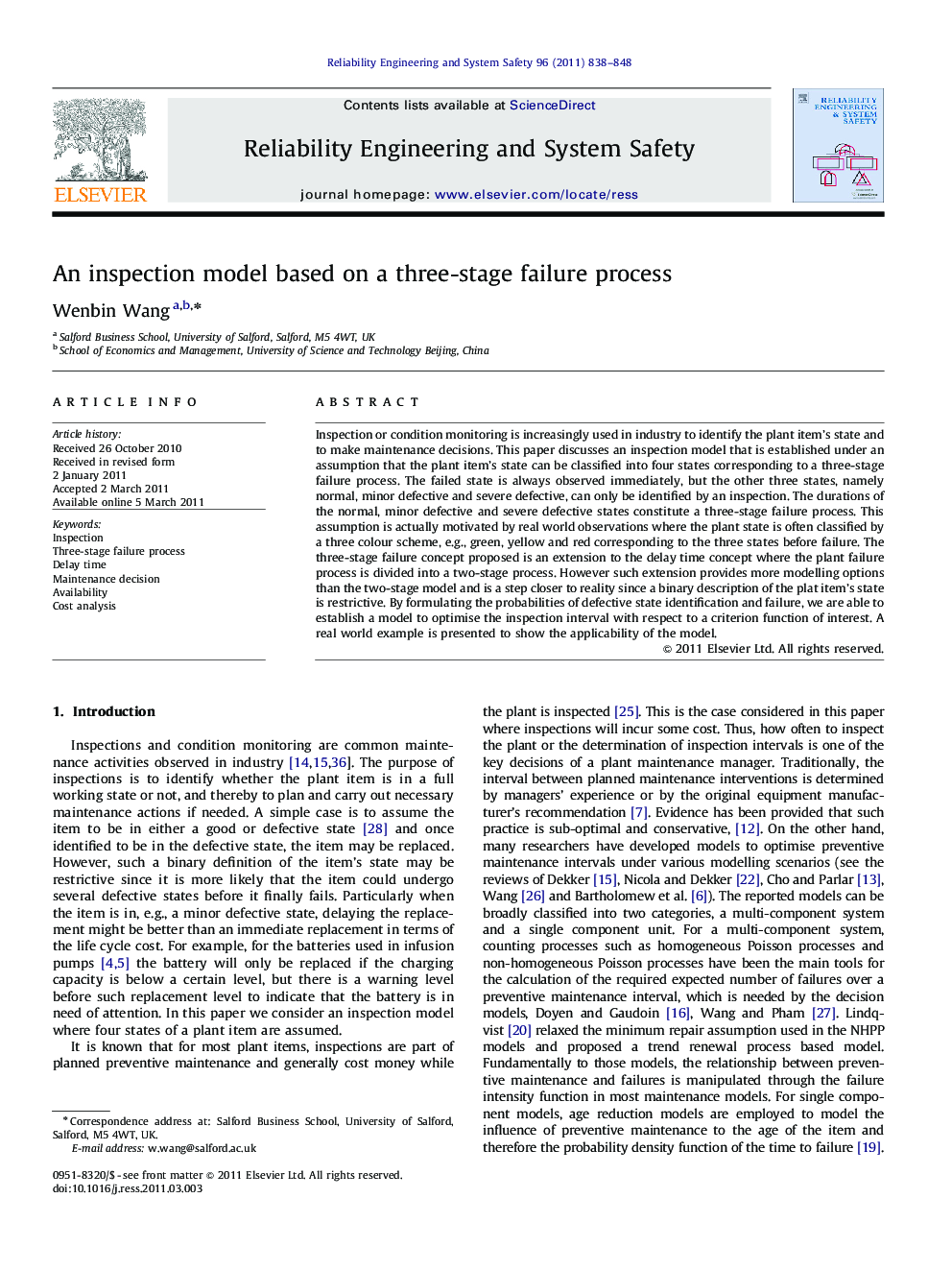| Article ID | Journal | Published Year | Pages | File Type |
|---|---|---|---|---|
| 805819 | Reliability Engineering & System Safety | 2011 | 11 Pages |
Inspection or condition monitoring is increasingly used in industry to identify the plant item's state and to make maintenance decisions. This paper discusses an inspection model that is established under an assumption that the plant item's state can be classified into four states corresponding to a three-stage failure process. The failed state is always observed immediately, but the other three states, namely normal, minor defective and severe defective, can only be identified by an inspection. The durations of the normal, minor defective and severe defective states constitute a three-stage failure process. This assumption is actually motivated by real world observations where the plant state is often classified by a three colour scheme, e.g., green, yellow and red corresponding to the three states before failure. The three-stage failure concept proposed is an extension to the delay time concept where the plant failure process is divided into a two-stage process. However such extension provides more modelling options than the two-stage model and is a step closer to reality since a binary description of the plat item's state is restrictive. By formulating the probabilities of defective state identification and failure, we are able to establish a model to optimise the inspection interval with respect to a criterion function of interest. A real world example is presented to show the applicability of the model.
